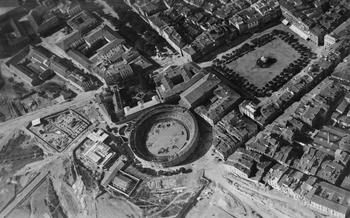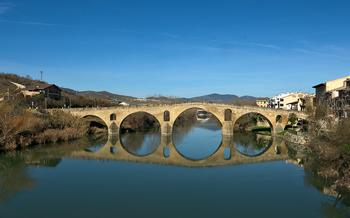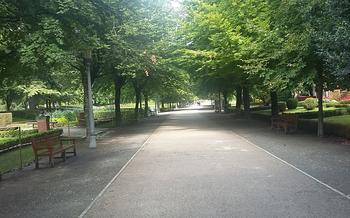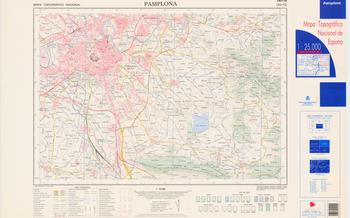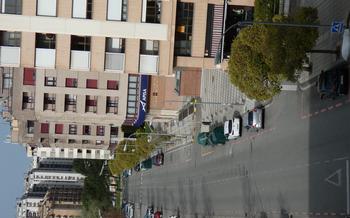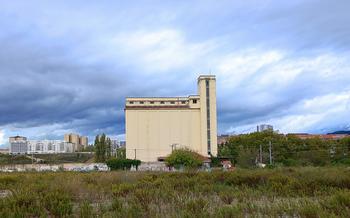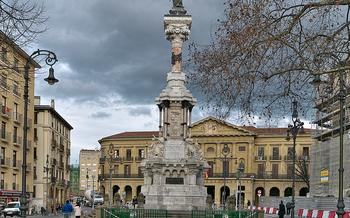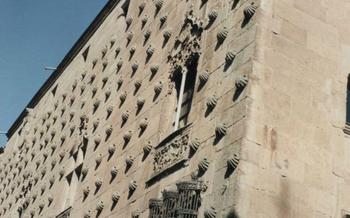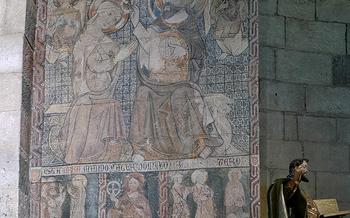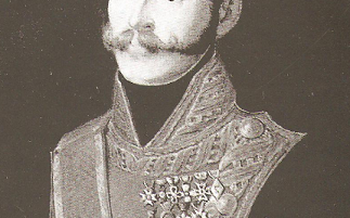
Fortress and Walls of Pamplona (Ciudadela y Murallas de Pamplona)
- Pamplona's Fortress and Walls: A Historical Overview
- Exploring the Citadel: A Majestic Fortress
- Strolling Along the Walls: A Scenic Walk
- Fortifications and the Running of the Bulls
- Hidden Gems Within the Fortifications
- Interactive Exhibits and Museums
- Local Legends and Folklore
- The Role of the Fortifications in Modern Pamplona
- Practical Information for Visitors
- Capture the Perfect Shot: Photography Tips
- Step Back in Time: Historical Reenactments
- Insider Tip: Unveiling a Secret Passage
Pamplona's Fortress and Walls: A Historical Overview
Pamplona's impressive fortifications, consisting of the Citadel and the Walls, stand as enduring testaments to the city's rich history and strategic significance. The construction of the fortress, known as the Ciudadela, commenced in the 16th century under the reign of King Philip II, serving as a key defensive structure against potential invaders. The Walls, encircling the city's historic center, were initially built in the Middle Ages and underwent several expansions and modifications over the centuries, reflecting the evolving needs for protection and defense.
These fortifications played a crucial role in safeguarding Pamplona during numerous conflicts and sieges, including the Peninsular War against Napoleon's forces in the early 19th century. The architectural styles showcased in the fortress and walls range from Renaissance to Baroque, blending seamlessly with Pamplona's medieval heritage. These fortifications stand as enduring symbols of the city's resilience and strength, inviting visitors to delve into the captivating tales of Pamplona's past.
Exploring the Citadel: A Majestic Fortress
The Citadel, a magnificent star-shaped fortress, stands as a testament to Pamplona's rich military history. Constructed between the 16th and 17th centuries, this imposing structure served as a crucial defense against invading forces, particularly during the Napoleonic Wars. Its strategic location atop a hill overlooking the city provided a commanding view of the surrounding countryside, allowing for effective surveillance and defense.
The Citadel's layout is a marvel of military engineering, featuring multiple bastions, ravelins, and moats. Its thick walls, constructed of sturdy stone, were designed to withstand enemy artillery fire. Inside the fortress, a network of underground tunnels and chambers provided shelter for soldiers and supplies. The Governor's Palace, an elegant building within the Citadel, served as the residence of the military commander and housed administrative offices.
Today, the Citadel has been transformed into a vibrant cultural and recreational space, welcoming visitors to explore its rich history and architectural grandeur. Its well-preserved ramparts and fortifications offer a glimpse into the past, while its expansive grounds now host concerts, exhibitions, and other events, bringing new life to this historic site.
Strolling Along the Walls: A Scenic Walk
Stretching for over 5 kilometers, Pamplona's Walls encircle the city like a protective embrace. A leisurely stroll along these ancient ramparts offers a unique perspective on the city and its surroundings. The walls stand as silent witnesses to the passage of time, having guarded Pamplona for centuries against invaders and adversaries. Their strategic placement atop a hill affords breathtaking panoramic views of the cityscape, the rolling countryside beyond, and the majestic Pyrenees Mountains in the distance.
As you traverse the walls, you'll encounter a series of imposing gates, each with its own unique story to tell. The Portal de Francia, a particularly notable gateway, served as the main entrance to the city during medieval times. Adorned with intricate carvings and a majestic arch, it stands as a testament to the city's rich architectural heritage.
The walls themselves are a testament to the ingenuity and resilience of Pamplona's inhabitants. Constructed using a combination of stone, brick, and mortar, they feature a complex system of bastions, towers, and moats that were designed to repel enemy attacks. While their primary purpose was defense, the walls also served as a vital trade route, connecting Pamplona to the outside world.
Today, the walls have been transformed into a scenic promenade, offering visitors a chance to soak in the city's history and beauty. As you wander along the ramparts, you'll encounter a series of interpretive panels that provide insights into the walls' construction, their role in Pamplona's defense, and the city's fascinating past.
Fortifications and the Running of the Bulls
The fortress and walls of Pamplona play a crucial role during the world-famous Running of the Bulls, an exhilarating event that takes place annually during the San Fermín festival. The fortifications serve as both a starting point and a guiding structure for the daring runners who participate in this adrenaline-fueled tradition.
The run begins within the confines of the Citadel, where the bulls are released from their pens. From there, they charge through the streets of Pamplona, following a designated route that leads them towards the bullring. The fortress and walls, with their sturdy construction, act as secure barriers, channeling the bulls along the predetermined path and ensuring the safety of participants and spectators alike.
Specific sections of the walls, such as the Portal de Francia gate, have particular significance during the bull run. This gate marks the point where the bulls enter the city, and its narrow passageway creates a thrilling bottleneck effect as the animals surge through.
To enhance safety measures, the route is carefully monitored and barricaded, with strategically placed escape routes and protective barriers to minimize risks for both runners and spectators. The presence of security personnel and medical teams along the course ensures that any emergencies are swiftly addressed.
Hidden Gems Within the Fortifications
Beyond the well-known landmarks of the fortress and walls, Pamplona's fortifications conceal hidden gems waiting to be discovered. One such gem is the Baluarte de Labrit, a lesser-known bastion located on the western edge of the Citadel. This secluded spot offers a unique perspective of the city, with panoramic views stretching from the Old Town to the surrounding countryside. The bastion's history is shrouded in mystery, but it is believed to have played a significant role in defending the city during past conflicts.
Another hidden gem is the Horno de la Ciudadela, a former bakery that once supplied bread to the soldiers stationed within the fortress. This atmospheric space has been beautifully restored and now serves as a cultural center, hosting exhibitions, workshops, and other events. Visitors can explore the old ovens and learn about the history of bread-making in Pamplona.
For those seeking a unique experience, the Túnel de la Ciudadela is a must-visit. This underground tunnel, originally constructed for military purposes, now offers guided tours that take visitors on a journey through the fortress's hidden depths. The tunnel's eerie atmosphere and fascinating history make it a popular attraction for history buffs and adventure seekers alike.
To uncover these hidden gems, it's best to venture off the beaten path and explore the lesser-known corners of the fortifications. Keep an eye out for hidden doorways, inconspicuous staircases, and forgotten courtyards. With a bit of curiosity and exploration, you'll be rewarded with unique discoveries that offer a glimpse into Pamplona's rich past.
Interactive Exhibits and Museums
Within the fortress and walls of Pamplona, visitors can delve into the city's rich history and significance through various museums and interpretation centers. These attractions provide immersive experiences, interactive exhibits, and educational programs that showcase Pamplona's unique heritage.
The Museo de la Ciudadela (Citadel Museum) takes center stage within the fortifications. This museum narrates the story of Pamplona's military past, delving into the fortress's construction and strategic importance. Visitors can explore exhibits on weaponry, uniforms, and military tactics, gaining insights into the city's defense strategies throughout the centuries.
The Centro de Interpretación de las Murallas (Walls Interpretation Center) unveils the history of Pamplona's walls, highlighting their architectural significance and the city's urban development. Interactive displays, audiovisual presentations, and scale models help visitors understand the walls' construction, modifications, and enduring role in shaping Pamplona's identity.
Accessibility and admission fees vary for each museum, but both offer guided tours and educational programs tailored to different age groups. These attractions provide an engaging and informative journey into Pamplona's past, making them must-visits for history buffs and curious travelers alike.
Local Legends and Folklore
The fortress and walls of Pamplona are steeped in local legends and folklore, passed down through generations. One captivating tale speaks of the "Basajaun," a mythical creature resembling a giant, hairy man who roamed the forests surrounding the city. Legend has it that the Basajaun possessed an extraordinary strength and was known for his mischievous pranks. He would often challenge locals to feats of strength, and those who emerged victorious were said to be blessed with good fortune.
Another legend tells of the "Brujas de Pamplona," or the Witches of Pamplona. These mysterious women were believed to possess magical powers and were said to gather within the fortress walls to perform rituals and cast spells. It was rumored that they could transform into animals, control the weather, and even heal the sick. While these tales may seem fantastical, they reflect the rich cultural heritage of Pamplona and add an air of enchantment to its historical fortifications.
The Role of the Fortifications in Modern Pamplona
The fortress and walls of Pamplona have transitioned from their original defensive purpose to become integral parts of the city's modern identity. Today, these historical structures serve as symbols of Pamplona's rich heritage and cultural pride. The city has successfully integrated the fortifications into its urban fabric, transforming them into vibrant public spaces that blend history with contemporary life.
The Citadel, once a formidable military stronghold, has been transformed into a cultural and recreational hub. It now houses museums, art galleries, and performance venues, hosting a variety of cultural events throughout the year. The Citadel's expansive green spaces provide a tranquil oasis within the city, inviting locals and visitors alike to relax, stroll, or enjoy outdoor activities.
The Pamplona Walls, once a protective barrier, have become a scenic promenade offering breathtaking panoramic views of the city and the surrounding countryside. The walls have been meticulously restored and converted into a pedestrian walkway, allowing visitors to explore the city's history while enjoying the fresh air and stunning vistas.
Preserving and maintaining these historical fortifications presents both challenges and opportunities for Pamplona. The city authorities have implemented strict conservation measures to protect the integrity of the structures while ensuring their accessibility to the public. Balancing the need for preservation with the demands of modern urban development requires careful planning and collaboration among various stakeholders.
Public perception and appreciation of the fortifications have evolved over time. Once seen primarily as defensive structures, they are now widely recognized as valuable historical and cultural assets. The fortifications have become a source of pride for Pamplona's residents, who actively participate in events and initiatives aimed at promoting and preserving their heritage.
The fortress and walls of Pamplona stand as enduring testaments to the city's resilience and transformation. By embracing and adapting these historical structures, Pamplona has created a harmonious blend of past and present, showcasing its commitment to preserving its cultural legacy while embracing modern progress.
Practical Information for Visitors
Exploring the fortress and walls of Pamplona is a captivating experience that can be enjoyed by travelers of all ages. To make the most of your visit, here are some practical considerations:
-
Accessibility: The fortress and walls are easily accessible on foot, by bike, or using public transportation. Several bus lines stop nearby, making it convenient to reach from different parts of the city.
-
Guided Tours: For a more in-depth experience, guided tours are available in multiple languages. These tours provide historical insights, anecdotes, and architectural details that enhance your understanding of the fortifications.
-
Opening Hours: The Citadel and the Walls are generally open to the public during daylight hours, but it's advisable to check specific opening times before your visit, as they may vary depending on the season or special events.
-
Admission Fees: Admission to the Citadel and the Walls is free of charge, allowing visitors to explore these historical landmarks without any financial barriers.
-
Facilities: Restrooms and drinking fountains are available within the Citadel and along the Walls, ensuring the comfort and convenience of visitors.
Capture the Perfect Shot: Photography Tips
The fortress and walls of Pamplona offer a picturesque backdrop for photography enthusiasts. To capture stunning images, consider visiting during the golden hours of sunrise and sunset, when the warm light casts a magical glow on the ancient structures. For panoramic views, head to the top of the walls or find elevated vantage points within the Citadel. Experiment with creative angles and compositions to showcase the unique architectural details and the surrounding cityscape. Utilize lighting and filters to enhance the mood and atmosphere of your photographs, transforming them into lasting memories of your visit to Pamplona.
Step Back in Time: Historical Reenactments
For a truly immersive experience, visitors can attend historical reenactments or living history events held within the fortifications. These events transport visitors back in time, showcasing the rich history and heritage of Pamplona. Reenactors, dressed in authentic costumes, bring to life significant historical events and characters, offering a glimpse into the past. Visitors can witness battles, demonstrations of traditional crafts, and even interact with the reenactors, gaining a deeper understanding of Pamplona's history. These reenactments not only provide entertainment but also serve as educational experiences, allowing visitors to connect with the past in a tangible way.
Insider Tip: Unveiling a Secret Passage
Amidst the grandeur of Pamplona's fortifications lies a hidden gem known only to a select few. Whispers of a secret passage have intrigued visitors for centuries, and those who dare to seek it out will be rewarded with a glimpse into the fortress's mysterious past.
Legend has it that this hidden passage was once used by soldiers to escape undetected during times of siege. Its existence was kept a closely guarded secret, ensuring the fortress's impregnability.
To discover this elusive passage, one must venture into the depths of the Citadel, navigating a labyrinth of tunnels and chambers. The path is not for the faint of heart, but those who persevere will be rewarded with a sight that few have ever seen.
Emerging from the darkness, visitors will find themselves in a secluded courtyard, hidden from the bustling city beyond the walls. This secret sanctuary offers a unique perspective on the fortress's history and architecture, inviting visitors to step back in time and experience the intrigue and mystery that once unfolded within these walls.
